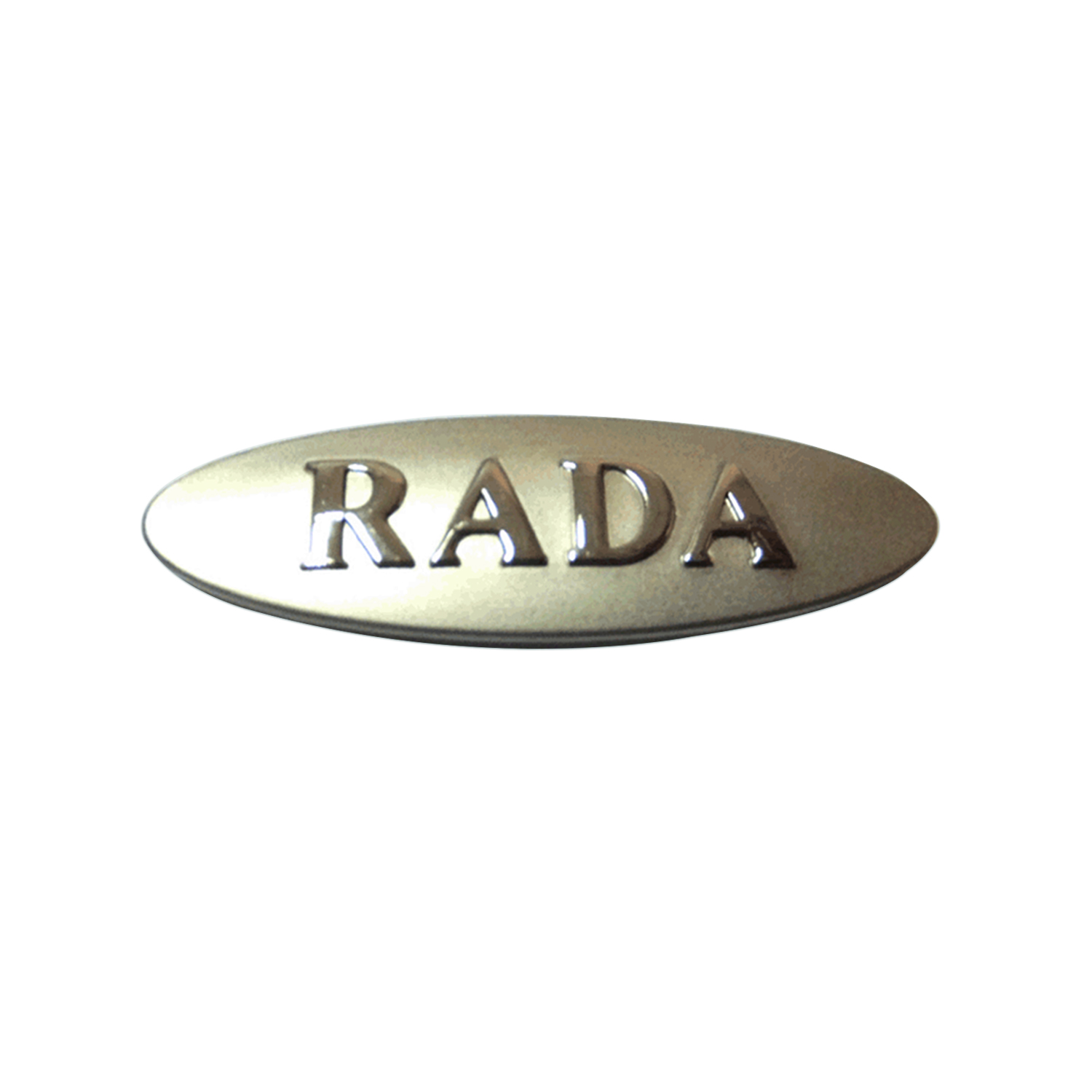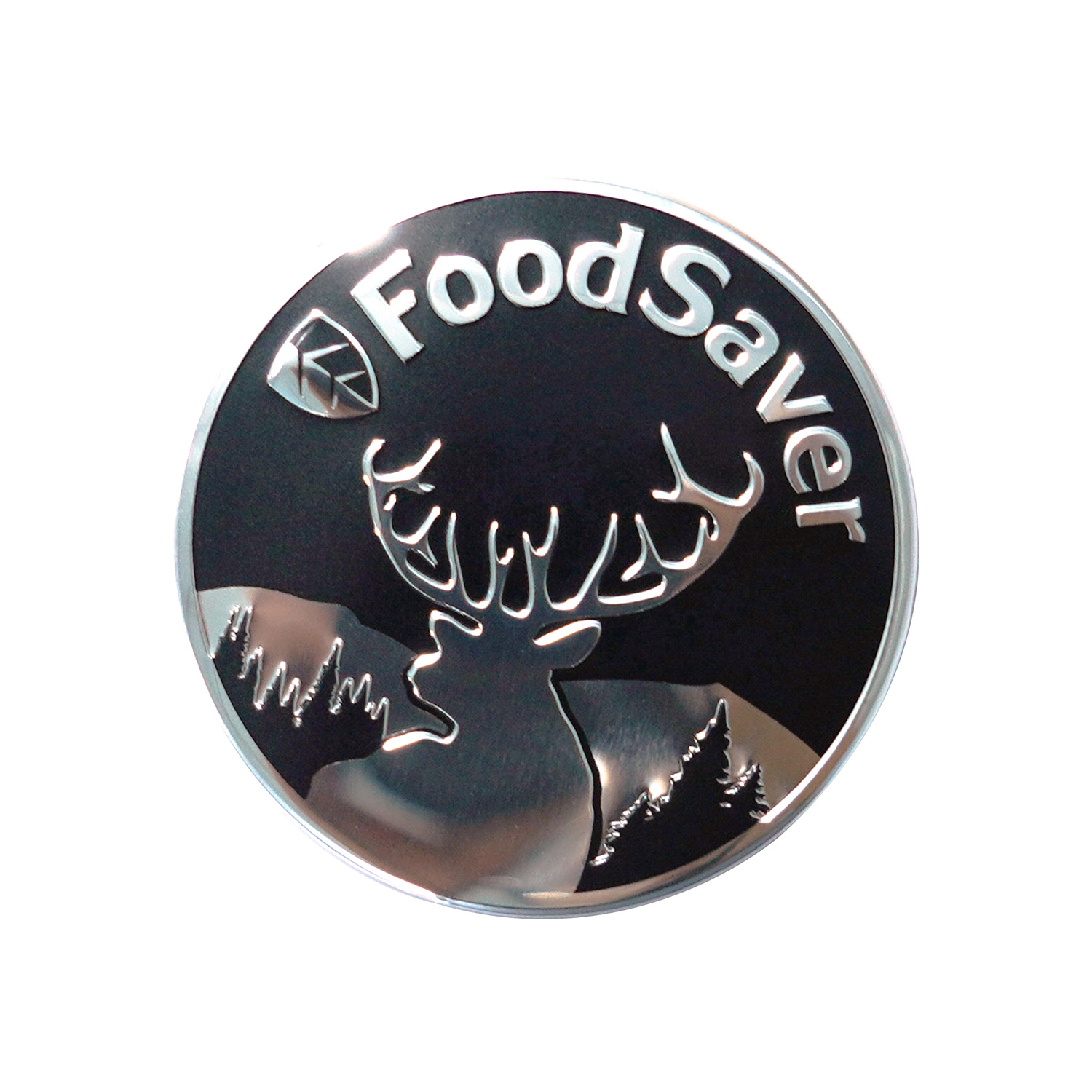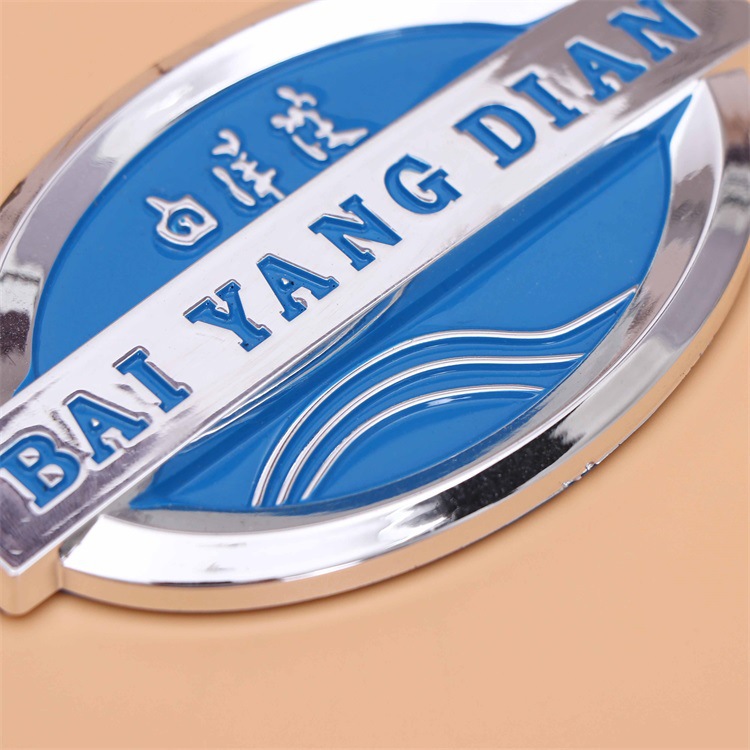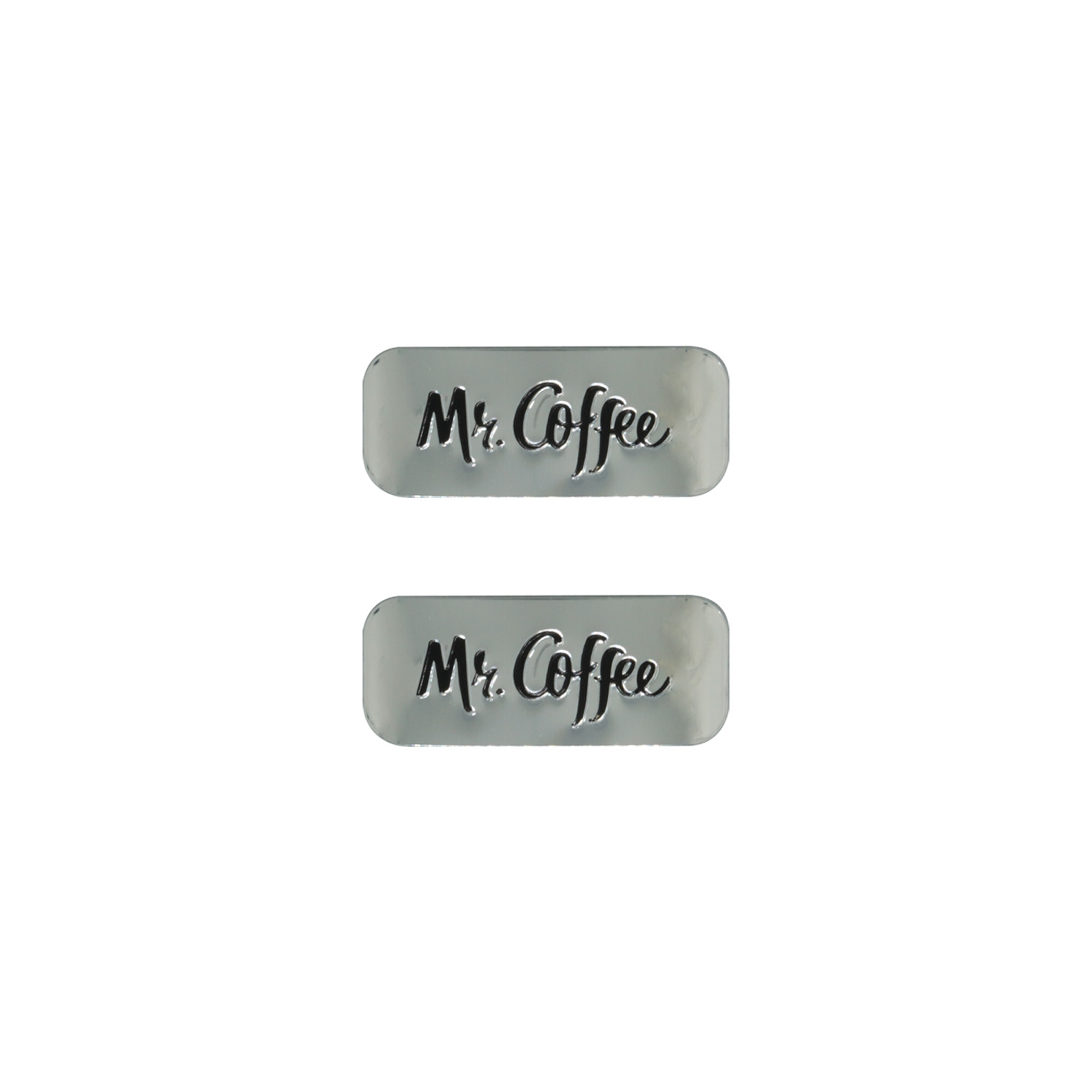




| Embossed Nameplate | |
| Shape | Customized |
| Materials | Plastic,Stainless steel, aluminum, zinc alloy, iron, tin. |
| Performance | Waterproof, Dustproof, UV Resistant |
| Dimension | OEM service according to custom requirements |
| Colour | Pantone and RAL color matching system |
| Adhesive | 3M, Nitto, Tesa etc… |
| Printing | Screen printing |
| Surface Finishing | printing, anodizing, electroplate, electroform, painted, stoving varnish, etching and laser engraving technology etc. |
| Thickness of Epoxy | 0.5-3mm, thickness as request |
What is A “Embossed Nameplate”?
Embossed nameplate refers to a brand name or logo that is embossed. The relief process is a decorative process in which the surface of metal, plastic or other materials is carved through the relief process, so that the pattern or text is raised from the surrounding background to form a three-dimensional effect.
Embossed nameplate embossing process makes the design and text has remarkable stereo effect, to enhance the visual impact, and treatment of embossment, famous brand present a unique texture and surface texture, improve the overall level. The embossing process is usually used in combination with strong materials such as metal, making the name brand have strong durability and wear resistance.
Features & Benefits of Embossed Nameplate Include:
Product Features:
Three-dimensional appearance: The most prominent feature of embossed nameplate is the three-dimensional appearance. Raised text or designs stand out from the background to create a striking visual effect.
Haptic feedback: embossed nameplate can not only be seen, but also felt. This haptic feedback adds an additional level of engagement and perception of quality for the user or viewer.
Embossed nameplates are usually made of durable materials, such as metal (aluminum, brass, stainless steel) or high-quality plastics, ensuring long-lasting performance.
Customizability: embossed nameplates can be customized to include specific text, logos, designs, or symbols, making them ideal for branding and identification purposes.
Various materials: Depending on the application, embossed nameplates can be produced in a variety of materials to meet different requirements, including metal, plastic, and even leather or wood appearance finishes.
Multiple colors: Embossing can be combined with color printing to create a more visually appealing nameplate. Colors can be added to raised areas, backgrounds, or both.
Product Benefits:
Enhance the brand: embossed nameplates with custom logos and brand elements help establish a professional and mature image for your product or company.
Improved visibility: The words and designs on embossed nameplates are easier to see and notice than in flat print, making them an excellent choice for labels or signage.
Durability and longevity: The durability of the materials used and the embossed process itself contribute to the longevity of the embossed nameplate, ensuring that it remains in good condition for a long period of time.
Tamper-proof: embossed nameplates are generally more difficult to tamper with or change than printed labels, making them ideal for security or authenticity purposes.
Versatility: The ability to customize and use a variety of materials and colors makes embossed nameplates versatile and suitable for a wide range of applications from consumer products to industrial equipment.
What Special Features Can Be Incorporated into Embossed Nameplate?
Custom design:
Embossed nameplates can be customized with unique designs, logos, and text to meet specific branding or identification requirements. This allows for personalized branding, whether it’s a business logo, product label, or personal accessory.
Multiple colors:
While embossing itself creates a raised or dented image on the material, additional colors can be added through the printing or plating process. This allows for merging brand colors, contrasting accents, and even gradient effects, making embossed nameplates more visually appealing.
Different materials:
Embossed nameplates can be made from a variety of materials, including metal (aluminum, brass, stainless steel), plastic, and even leather or wood exterior finishes. The choice of material will affect the durability, weight and overall appearance of the nameplate.
Textured surface:
In addition to embossed design, the surface of the nameplate can also be textured to increase depth and interest. This can include brushed, matte, or even glitter, depending on the desired effect.
Shape and size:
Embossed nameplates can be produced in a variety of shapes and sizes to suit specific applications. Whether it’s a small badge on a tote bag or a large sign on a building, the shape and size of the nameplate can be customized to meet the needs of the project.
Enhanced durability:
In order to increase the durability of embossed nameplates, additional treatments may be applied, such as plating (gold, silver, chromium, etc.) or protective coatings. These treatments can help protect the nameplate from scratches, corrosion and wear.
Fasteners and accessories:
Depending on the intended application, embossed nameplates can be equipped with a variety of fasteners and accessories such as pins, magnets or strips. This allows for easy installation and removal, as well as secure connections to various surfaces.
Design Features of Embossed Nameplate
Embossed nameplates typically contain a range of design features to enhance their visual appeal, durability, and functionality. Here are some key design features common to embossed nameplates embossed text and images:
Embossed nameplate The most prominent feature of embossed nameplate is, of course, the embossed font or image. This creates the effect of bumps or depressions on the surface of the material, adding depth and texture to the design. Embossed fonts can be customized with fonts, sizes and spacing to suit specific applications.
Contrasting colors:
While embossing itself creates a visual distinction, contrasting colors can be used to further improve the readability and visibility of the nameplate. This can be done by printing, electroplating, or using materials with inherent color contrast.
Borders and Outlines:
Embossing a border or outline around the text or image can help frame the design and draw attention to the most important elements. Borders can be simple lines or more complex patterns, depending on the desired effect.
Texture background:
Embossed nameplate backgrounds can be textured to increase visual interest and contrast with embossed designs. This can include brushed, matte, or even glossy finishes, which can help embossed elements stand out more.
Material selection:
The choice of embossed nameplate material can significantly affect its design features. Metals such as aluminum, brass, and stainless steel offer durability and a premium appearance, while plastics and synthetic materials are lighter and more cost-effective. The material also affects the feel and tactile experience of the nameplate.
Custom shapes and sizes:
Embossed nameplates can be produced in a variety of shapes and sizes to suit specific applications. A custom shape adds a unique touch to the design, while the proper size ensures that the nameplate is easy to read and meets its intended purpose.
Enhanced durability:
Design features that enhance embossed nameplate durability include plating (e.g., chrome, gold, or silver) to resist corrosion, protecting the coating against scratches and wear, and reinforcing the edges to prevent chipping or cracking.
BX Panel Embossed Nameplate Technical Information
- Pre-press preparation
Design and Layout:
First, embossed nameplate design and typesetting according to customer needs. The design content includes the layout of elements such as text, pattern, and color, as well as the simulation or intended design of the embossed effect.
Text must be bent or traced to ensure compatibility across different systems and devices.
According to the design needs to choose the appropriate paper material, for the relief effect, may need to use a certain thickness and hardness of the paper.
Print document production:
Convert embossed nameplate design documents to printable formats such as PDF or TIFF.
Ensure that the printed document complies with printing standards, such as the color mode should be CMYK, and the resolution should be high enough to guarantee printing quality.
Printed documents need to be designed to bleed (that is, to exceed the size of the finished product) in order to obtain an accurate size of the finished product when cutting
Inch.
- Plate making
Send the printed documents to the plate making workshop for plate making. Plate making is the process of converting a design document into a plate, which has raised and concave parts corresponding to the graphics and text that need to be printed.
For the relief effect, special attention needs to be paid to the shape and height of the raised part when making plates to ensure that the desired relief effect can be achieved after printing.
Step 3 Print
Install the plate on the press, adjust the printing parameters, such as ink volume, printing pressure, etc.
The printing press transfers ink to paper to form graphics and text. Due to the special nature of the relief effect, it may be necessary to print several times or use special inks to achieve the best results.
- Processing after printing
Embossed treatment:
After the Nameplate printing is completed, the printed matter is embossed. This is usually achieved by means of pressure machining, in which a pre-made press plate (with a concave and convex shape opposite to the original figure) is placed on the print and pressure is applied to create an embossed effect.
Embossing can be done manually or with automated equipment. The precision and efficiency of the automation equipment are higher, and the quality and consistency of the relief effect can be better controlled.
- Back adhesive
According to the use of the product environment and requirements, choose the appropriate type of back adhesive, such as waterproof, temperature resistance, super bonding, etc. We offer 3M, Crown, Soken, Nitto, Sony, uxking and other adhesive brands.
What Industries Use Embossed Nameplate?
Automotive industry:
Embossed nameplates are commonly used for brand, model identification, and regulatory compliance marking of vehicles. They can be found on external surfaces such as bumpers, door panels and trunk covers, as well as internal components such as dashboards and steering wheels.
Furniture Industry:
Furniture manufacturers use embossed nameplates to label a product’s brand name, model number, and other identifying information. These nameplates add a touch of sophistication and durability to the furniture, enhancing its overall look and value.
Electronics Industry:
In the electronics industry, embossed nameplates are used to identify components, equipment, and systems. They can be found on enclosures, housings and panels, providing clear and durable labels that are resistant to wear and tear.
Jewelry Industry:
Embossed nameplates are also popular in the jewelry industry, where they are used to carve or embossed metal labels with brand logos, product information, and serial numbers. These nameplates add a premium touch to the jewelry and help with brand and product identification.
Packaging Industry:
The packaging industry utilizes embossed nameplate brands and product logos for cartons, boxes, and other packaging materials. Embossed logos and text on packaging can help create a unique and striking design that makes a product stand out on store shelves.
Gift and souvenir industry:
Embossed nameplates are commonly used in the gift and memorabilia industry to create personalized and customized items. They can be engraved with names, dates, messages, or other designs, making them ideal for commemorative items such as commemorative plaques, trophies, and souvenirs.
Industry and Manufacturing:
In industrial and manufacturing settings, embossed nameplates are used for identification, warning labels, and operating instructions. They can be found on machines, equipment and components, providing important information and instructions for operators and maintenance personnel.